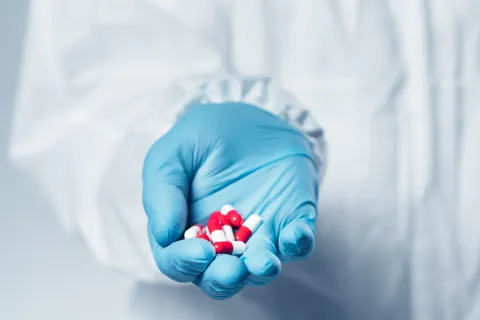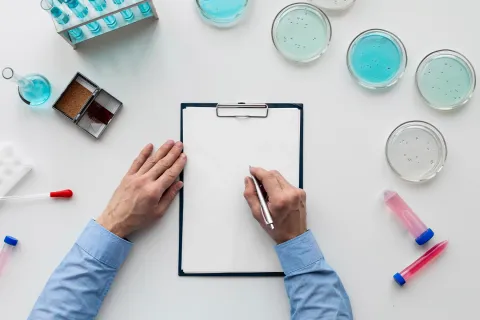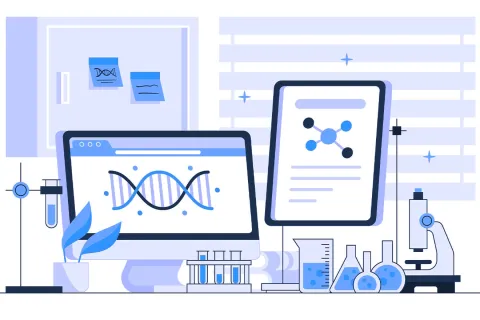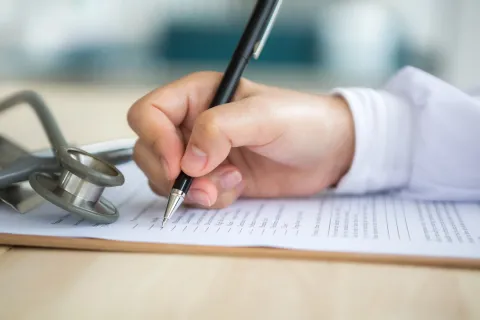
Introduction:
An Investigational New Drug (IND) application clinical hold can significantly disrupt drug development, leading to delays and increased costs. From a nonclinical perspective, ensuring the completeness, quality, and Regulatory compliance of nonclinical data is critical in preventing such setbacks. This blog focuses on common nonclinical reasons for clinical holds, strategies to avoid them, and actionable steps to recover if a hold is imposed.
What Is a Clinical Hold?
A clinical hold is the Food and Drug Administration (FDA) directive that halts the initiation or continuation of a clinical trial due to unresolved safety concerns, gaps in nonclinical data, or protocol deficiencies. While under a clinical hold, recruitment and drug administration are prohibited unless the FDA grants specific exemptions. Clinical hold can be classified as either a complete clinical hold or a partial clinical hold.
Complete Clinical Hold – This suspends/delays the complete clinical investigation requested under the IND application.
Partial Clinical Hold—Unlike a complete clinical hold, a partial clinical hold suspends/delays a particular aspect of clinical investigation. For example, a specific protocol or studies are not allowed to proceed, while the other parts of the investigation are allowed to proceed.
Some of the Reasons for Clinical Holds
1. Product Quality Issues
- Impurities or instability in the drug formulation are not qualified toxicologically
- Lack of robust documentation for the manufacturing process or specifications
2. Pharmacology and Toxicology Deficiencies
- Insufficient or incomplete preclinical safety data to justify the proposed clinical trial dose, route, or duration
- Poorly executed or non-GLP-compliant pivotal toxicology studies
- Ambiguity in safety margins and exposure levels across species
3. Inadequate Nonclinical Documentation
- Inconsistent or incomplete data presentations in the IND submission
- Missing critical sections/data such as pharmacodynamics, pharmacokinetics (PK), toxicokinetics (TK), toxicology, or safety pharmacology results
How to Avoid an IND Clinical Hold from a Nonclinical Perspective
1. Conduct Thorough and Relevant Nonclinical Evaluation
- Use appropriate animal models that are relevant to human physiology
- Perform GLP-compliant studies for pivotal toxicity evaluations
- Align the study duration with the proposed clinical trial timeline to address safety concerns comprehensively
2. Select Accurate Dose Ranges
- Establish the no-observed-adverse-effect level (NOAEL) and calculate safety margins to support dose selection
- Avoid proposing doses exceeding nonclinical safety thresholds without robust justification
3. Provide Comprehensive Nonclinical Data
- Include detailed pharmacokinetics (PK), toxicokinetics (TK), and exposure-response data to support human safety margins
- Clearly explain the relevance of exposure levels observed in animal models to the proposed clinical dose
4. Ensure High-Quality Nonclinical Documentation
- Present data in a clear, consistent, and well-structured format to facilitate Regulatory review
- Engage experienced nonclinical writers to ensure Regulatory compliance, clarity, and to convey the necessary information to FDA reviewers effectively
5. Engage with the FDA Early
- Utilize pre-IND meetings to discuss study design, species selection, and dose justification to address potential nonclinical concerns early
6. Work together with Experts/Consultants
- Collaborate with CMC and nonclinical experts/consultants to understand the Regulatory requirements during IND submission.
Recovering from an IND Clinical Hold: Nonclinical Strategies
1. Analyse the FDA’s Concerns
- Carefully review the clinical hold letter to identify nonclinical deficiencies and required corrective actions.
- Categorize issues into specific areas such as pharmacology, toxicology, or data gaps.
2. Strategically Address Nonclinical Gaps
- Conduct additional GLP-compliant studies or re-analyse existing data to resolve deficiencies
- Provide supplemental nonclinical data to address specific concerns raised by the FDA.
3. Collaborate with Experts
- Work with toxicology experts, contract research organizations (CROs), and Regulatory consultants to expedite nonclinical studies.
4. Communicate Progress Effectively
- Keep stakeholders informed of timelines for resolving the hold and ensure Regulatory authorities are updated on study progress.
5. Submit a Comprehensive Response
- Address all deficiencies with precise, well-documented nonclinical data before submitting the response to the FDA.
- The FDA typically reviews responses within 30 days, provided all issues are resolved.
Key Takeaways
- Comprehensive and GLP-compliant nonclinical studies are essential to avoid IND clinical holds.
- Early engagement with the FDA and clear, high-quality documentation significantly reduce the risk of Regulatory setbacks.
- In the event of a clinical hold, strategic planning, efficient communication, and collaboration with experts are critical to resolving nonclinical deficiencies and resuming development promptly.
By adhering to these best practices, sponsors can navigate the complexities of nonclinical requirements, ensuring safety, Regulatory compliance, and timely progression of their drug development programs.









